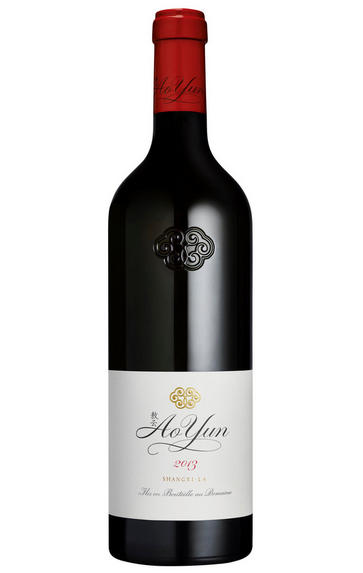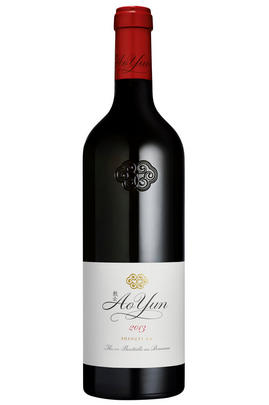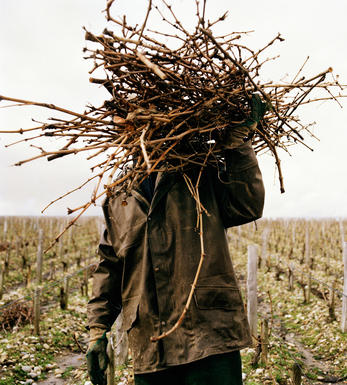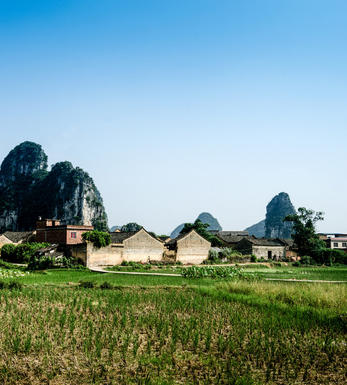
2014 Ao-Yun, Shangri-La, China

Critics reviews
Drink 2022 to 2034
Jane Anson, Inside Bordeaux (March 2022)
About this WINE

Moet Hennessy Estates & Wines
Ao-Yun means “flying above the clouds” or “roaming above the clouds”, referring to the thick, wandering clouds over the north Yunnan, at the edge of the Himalayas in southern China where the borders of Myanmar, Laos and Vietnam meet China. Owned, financed and run by Moët Hennessy (one of the world’s great fine wine companies), Ao-Yun is a project headed up by the inimitable Jean-Guillaume Prats, a name you may be familiar with for his work at Cos d’Estournel in Bordeaux.
The vines were planted in 2002, when the government incentivised local farmers to diversify their crops. LVMH came on board in 2013, selecting four vineyards (totalling 28 hectares), all of which sit at between 2,200 and 2,600 metres above sea-level, for their project. This extraordinary altitude results in fewer hours of sunshine a day, but a longer ripening period, with 160 days between flowering and harvest (versus 120 in Bordeaux). This leads to very fine, elegant, aromatically complex Cabernet Sauvignon.
The wine itself is 90% Cabernet Sauvignon and 10% Cabernet Franc, with the first vintage 2013. As Jasper Morris MW speculated upon tasting the first vintage in October 2015, it “shows amazing promise. It is recognisably Cabernet, while not resembling the wines of any other region, New World or Old.”

China
China may not be the first country that comes to mind when you think about wine consumption or production but this is changing fast, along with so much else in China. Already the country has half a million hectares under vine (three times as much as Australia, for example) and sits sixth in the international league table of wine production.
Unsurprisingly there is an enormous variety of climates and soils; most remarkable is the Xinjiang region, where vineyards are grown around the Turfan Depression, about 500 feet below sea level. Temperatures range from to -40C in winter to +50C in summer, with irrigation from underground deposits of melt water from the Tianshan mountains. But no classic grape varieties here.
Shandong Province is the largest producing region, on approximately the same latitude as California, 300km south of Beijing. Also notable is the startlingly remote Liaoning wine region, whose eastern border adjoins North Korea. Here the progressive Changyu Wine Company, China’s largest wine producer, identified conditions highly suitable for the production of ice wine, and began planting 5,000 hectares in 2001.
China’s other wine producing regions, which include the alluring names of Ancient Yellow River Area and Helan Mountains, spread from the coast on the approximate European vineyard latitudes until they meet Xinjiang (above), towards the border with Mongolia, although there is also the Yunnan region, well to the south of the country, towards Burma. Unsurprisingly this climate is warm and traditionally has been table grape territory but China’s growing thirst for red wines has encouraged wine production here as well.
The most important change to come will be the supplanting of the indigenous Long Yan (Dragon’s Eye) and Ju Feng Noir with classic grape varieties. External investors, and recently there have been several big players, have had to cope with the former until now, and were unable to produce much beyond simple fare. As and when Cabernet Sauvignon, Chardonnay and their friends get a real hold, quality will improve significantly.
Whilst it seems extraordinary to be writing some of these names in connection with wine, have no doubt that the Chinese interest in wine is growing and with that will come a much greater focus on its domestic production. China has the will and resource to become a very important player.

Cabernet Sauvignon Blend
Cabernet Sauvignon lends itself particularly well in blends with Merlot. This is actually the archetypal Bordeaux blend, though in different proportions in the sub-regions and sometimes topped up with Cabernet Franc, Malbec, and Petit Verdot.
In the Médoc and Graves the percentage of Cabernet Sauvignon in the blend can range from 95% (Mouton-Rothschild) to as low as 40%. It is particularly suited to the dry, warm, free- draining, gravel-rich soils and is responsible for the redolent cassis characteristics as well as the depth of colour, tannic structure and pronounced acidity of Médoc wines. However 100% Cabernet Sauvignon wines can be slightly hollow-tasting in the middle palate and Merlot with its generous, fleshy fruit flavours acts as a perfect foil by filling in this cavity.
In St-Emilion and Pomerol, the blends are Merlot dominated as Cabernet Sauvignon can struggle to ripen there - when it is included, it adds structure and body to the wine. Sassicaia is the most famous Bordeaux blend in Italy and has spawned many imitations, whereby the blend is now firmly established in the New World and particularly in California and Australia.


Buying options
Add to wishlist
Description
Second vintage and the step up is clear - already standing among the best Chinese wines that I have tasted, and an amazing achievement for only the second year. Soft plum in colour, just beginning to show its 8 years of age. There's a touch of reduction on the first nose, with plenty of concentrated damson and black cherry fruit to sink into on the palate, along with sage, clove, saffron, fennel, liqourice, graphite, crushed rocks. Sleek and enjoyable, with the fresh acidities of a mountain wine coming through more clearly as it ages than I found when it was first bottled. This was tasted as part of the vertical, then drunk again later over food and it was even better - strongly suggest seeking out to see just what can be produced on this site with a bit of bottle ageing. Harvest lasted from September 14 (Xidang Village, 2100m) through to October 21 (Adong Village, 2,600m), significantly earlier than 2013 after a warmer growing season, with low yields of just 15hl/h. First wine made in the new cellar located in Adong Village. 50% new oak for ageing.
Drink 2022 to 2034
Jane Anson, Inside Bordeaux (March 2022)
wine at a glance
Delivery and quality guarantee